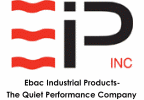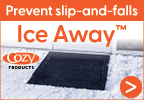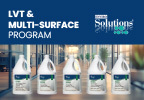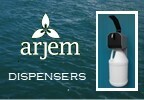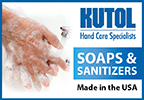Tork Works to Remove Barriers in Restrooms |
|
| Contributed by BSM Staff | |
STOCKHOLM -- Tork, an Essity brand and provider of professional hygiene, has launched “The Inclusive Hygiene Playbook,” a first-of-its-kind resource that provides research-backed tips for facility managers to improve hygiene in one of the busiest spaces in a facility, the restroom. According to a recent survey from Tork, only one in five public restrooms meet users’ hygiene and cleanliness expectations. And when public restrooms fail to meet users’ needs, it directly impacts the overall experience, business reputation, and depending on the facility type, revenue. For example: Fifty-two percent of people have acted upon a poor restroom experience* such as limiting how much they eat or not returning at all.” ** In office buildings – where people spend a significant portion of their day – restrooms account for over 45% of building complaints.*** This is because a significant number of people face barriers to hygiene in public restrooms that often go unknown to the people who own, manage or operate public restrooms. Some of these barriers are visible; others are not. For example, a barrier can include anything from soaps that use harsh chemicals and thus aggravate a person’s skin condition, loud air dryers that overwhelm individuals who are neurodiverse, or faucets and paper towel dispensers that are difficult to operate for those with limited hand mobility due to a condition like arthritis. Research shows that 54 percent of venue visitors contend with some form of physical or cognitive challenge* and 44 percent of people feel anxious about using public restrooms and often plan their days around access to proper hygiene.** “The Inclusive Hygiene Playbook was designed to help facility managers reevaluate the role of restrooms — not just as operational necessities, but as strategic assets that can elevate the user experience and drive business results,” said Amy Bellcourt, VP of Communications at Essity. “Backed by over 50 years of professional hygiene expertise and informed by ethnographic research conducted in 20 cities across North America, this playbook delivers actionable insights to transform public restroom spaces into business advantages.” The “Inclusive Hygiene Playbook” offers research-backed guidance to help businesses understand the challenges people face when using public restrooms and how to solve for them so the hygiene needs of as many people as possible can be met and thus drive business performance and reputation. The research revealed that today’s restrooms often feel unhygienic, uncomfortable and uncared for. The playbook outlines the following three key design principles and recommendations for addressing hygiene barriers and driving inclusive hygiene in public restrooms. 1) A clean and safe environment is paramount to encouraging return visits and boosting business performance "When restrooms fail to meet hygiene expectations, businesses pay the price, said Ron Clemmer, Director of the Global Handwashing Partnership, who partnered with Tork on an inclusive hygiene roundtable in Washington D.C. in June 2024. “If people feel at risk of inadequate hygiene solutions and getting sick or they just don’t want to use a dirty restroom – it damages trust, hurts customer experience, and ultimately impacts the facilities’ goals." 2) Put the “rest” back in restroom: design a comfortable and private space to increase user satisfaction and promote a better work environment. "Smart businesses are discovering that exceptional restrooms drive competitive advantage," said Dr. Steven Soifer, Treasurer, American Restroom Association, Co-Founder of the International Paruresis Association (IPA). "When facilities subject users to strong odors, excessive noise, and inadequate privacy – making restrooms feel overwhelming or even threatening – they fail the needs of people they serve. Forward-thinking organizations across industries are investing in comfortable, private, sensory-friendly design instead. In today's market, the quality of your restroom facilities can make the difference between someone feeling welcomed and valued resulting in a return visit or feeling overlooked. 3) The restroom should feel cared for: signal care with communications that showcase your business values. "Your restroom communicates your brand values whether you realize it or not," said Uma Srivastava, “Restrooms have long been overlooked in the evolution of human-centered design, but that needs to change,” said Lee Moreau, Founder of Other Tomorrows and Professor of the Practice in Design at Northeastern University. “The Inclusive Hygiene Playbook is a one-of-a-kind resource that not only challenges outdated norms, but empowers facilities with specific, actionable steps to create more humane, thoughtful and high-performing restroom environments.” To learn more and take actionable steps toward improving the restroom experience, download the Inclusive Hygiene Playbook at www.torkglobal.com/us/en/about/inclusive-hygiene#playbook. *Tork Insight Survey 2025, conducted in US, UK, Germany, France, Mexico, Canada, Australia, Spain, Sweden, Netherlands and Poland among 11,500 from the general public and 1,000 cleaning staff. |
|

